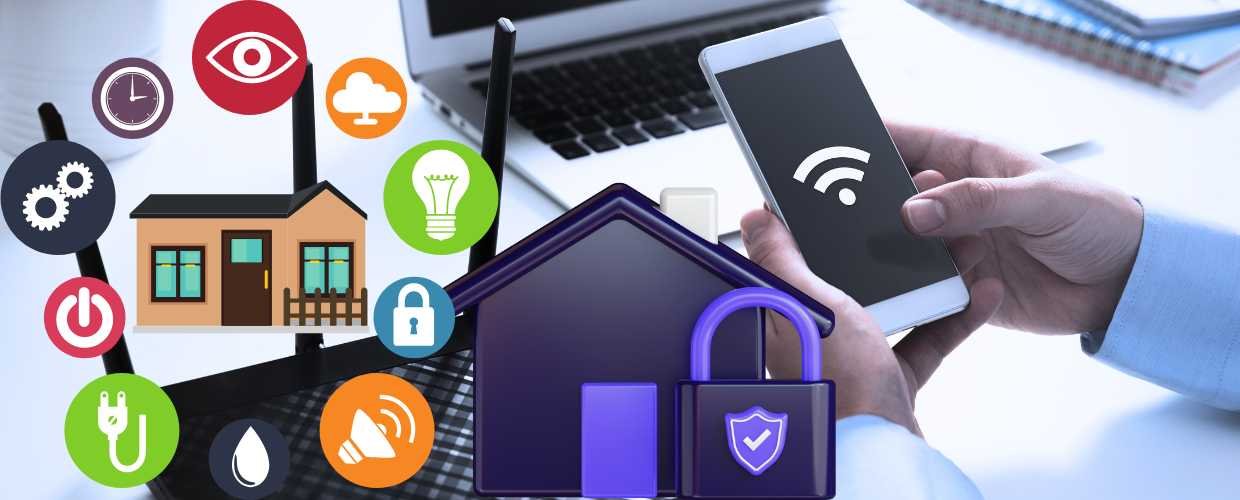In the age of digital connectivity, safeguarding your home network from cyber threats is necessary. Our daily lives are intricately woven with technology, and our devices—from smartphones to smart home appliances—are all connected within our home network.
Tips to Secure Home Network
This interconnectivity comes with risks, making it imperative to take proactive measures to fortify your network against potential breaches and cyber attacks. This comprehensive guide aims to empower you with the knowledge and actionable steps necessary to ensure the security of your home network, protecting your digital assets and personal information from cyber threats that could compromise your privacy and well-being.
Understanding the Significance of Security
Before exploring strategies for securing your home network, fully grasp the profound implications of an unsecured network.
- Data Privacy and Protection: Your home network holds a wealth of personal information, from financial transactions to personal communications. Securing your network is fundamental to safeguarding sensitive data from unauthorized access.
- Internet of Things (IoT) Vulnerabilities: The proliferation of IoT devices—such as smart thermostats, cameras, and voice assistants—makes each connected device a potential entry point for cybercriminals. A single compromised device could lead to a cascade of security breaches.
- Real Threat of Cyberattacks: Cyber threats are not merely abstract concepts; they are real and can have severe consequences. Malware, ransomware, and phishing attacks are ever-present risks that could lead to data loss, financial loss, and even identity theft.
Secure Your Wi-Fi Network
The bedrock of home network security lies in fortifying your Wi-Fi network.
- Strong and Unique Password: Begin by setting a strong and unique password for your Wi-Fi network. Avoid using easily guessable information like names, birthdates, or common words.
- Upgrade to WPA3 Encryption: Use the latest encryption standard, such as WPA3, to encrypt your Wi-Fi network traffic and protect it from interception and unauthorized access.
- Change Default Network Name (SSID): Changing the default network name to something distinctive not only adds a layer of security but also prevents potential attackers from guessing your router’s manufacturer.
Update and Patch Devices
Maintaining up-to-date devices and applications is a critical aspect of network security.
- Operating System Updates: Regularly update your devices’ operating systems. These updates often include security patches that address vulnerabilities that cybercriminals could exploit.
- Software Updates: Stay vigilant about updating software and applications on all devices. Outdated software can become an entry point for cyber attackers seeking vulnerabilities.
Set Up a Guest Network
Consider creating a separate guest network to minimize risks.
- Isolation of Guest Devices: A dedicated guest network ensures that devices brought into your home by visitors remain isolated from your primary devices, reducing the risk of unauthorized access.
- Guest Network Password: Assign a unique password to your guest network, separate from your primary Wi-Fi password; this adds an extra layer of security to your primary network.
Use Network Firewall
Employing a network firewall adds an essential layer of defense.
- Router Firewall: Activate and configure your router’s built-in firewall to filter incoming and outgoing network traffic, protecting your devices from malicious attempts to gain access.
- Software Firewalls: Install and enable software firewalls on individual devices, offering an additional barrier against unauthorized network traffic.
Implement Network Segmentation
Segmenting your network isolates devices and minimizes potential risks.
- IoT Device Separation: To mitigate the impact of a breach on other devices connected to your network, you can place IoT devices on a separate network from your primary devices.
- Work and Personal Devices: If applicable, consider segregating work-related devices from personal devices to enhance security.
Secure Your Smart Devices
Pay special attention to securing Internet of Things (IoT) devices.
- Change Default Passwords: Immediately change default passwords on all IoT devices to strong, unique passwords that are difficult to guess.
- Disable Unnecessary Features: Disable any features or services on smart devices that are not essential. Reducing the attack surface decreases the risk of potential breaches.
Educate Family Members
Collaboration and solidarity with family members are essential regarding cybersecurity.
- Phishing Awareness: Educate family members about recognizing phishing attempts and refrain from clicking on suspicious links or sharing personal information.
- Safe Downloads: Instill safe downloading practices to prevent the inadvertent downloading of malware or malicious software.
Use Strong Authentication
It is important to enhance the security of authentication methods.
- Two-Factor Authentication (2FA): Enable 2FA for accounts and services whenever possible; this requires an additional verification step and significantly enhances security.
- Biometric Authentication: Where available, biometric authentication options, such as fingerprint or facial recognition, can add an added layer of security.
Secure Router Admin Access
Secure access to your router’s administrative settings can be an effective step to protect your devices and data.
- Change Default Credentials: To access your router’s administrative interface, modify the default username and password. Use a combination of letters, numbers, and symbols.
- Strong Admin Password: Create a robust and unique password for router admin access to thwart unauthorized changes.
Regularly Monitor and Update
To ensure that network security is not compromised, it is essential always to remain watchful and diligent.
- Regular Network Audits: Review your network for unfamiliar devices or unusual activities and address any anomalies promptly.
- Stay Informed: Keep abreast of the latest cybersecurity threats and best practices to adapt your defenses as the threat landscape evolves.
Conclusion
As our lives become more digitized and interconnected, the security of our home networks becomes a paramount concern. Implementing the strategies outlined in this guide can help you proactively safeguard your home network from cyber threats. Your efforts to secure your network transcend mere protection; they ensure the sanctity of your personal information, sensitive data, and digital interactions. By prioritizing home network security, you’re constructing a resilient fortress in the digital realm. In this haven, your privacy remains intact, your data remains secure, and your digital life flourishes without fear of compromise.










